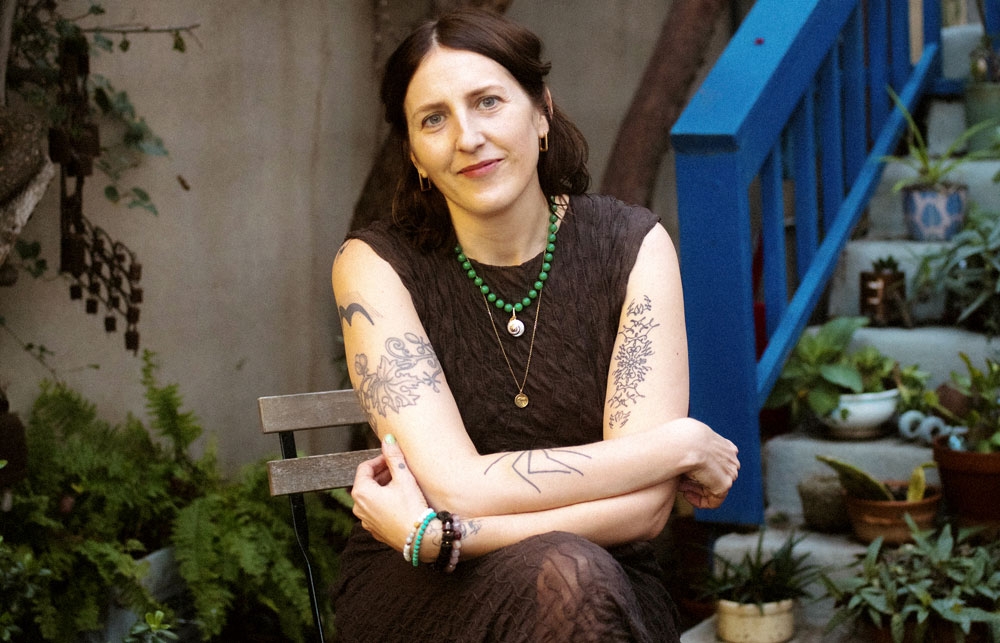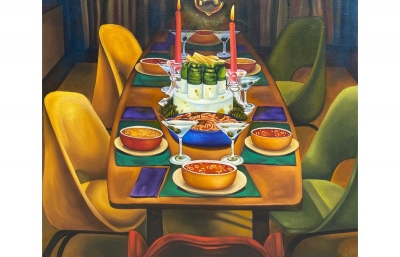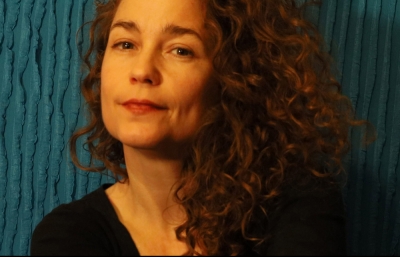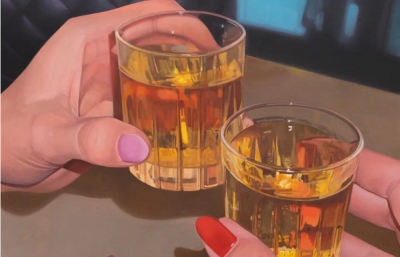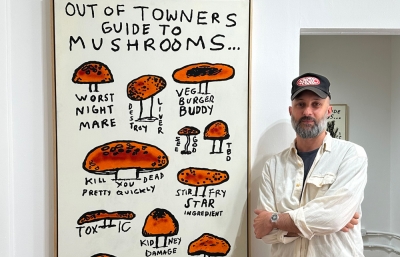What other elements of home and college contributed to your self-expression?
My family is very creative. We never had much money, but for play, I always had some kind of art materials. Mom is an avid reader, walker, and gardener. My dad, a writer, and occasional painter shared his watercolors or collage materials, so my imagination was being fed all the time. I loved playing in the dirt, in the rivers. We always went to museums. As a kid, we lived in Long Beach for a bit, and I recall my first visit to LACMA and being blown away by the paintings.
I loved putting on plays, singing, making stage sets, and costumes; also making illustrated books and accompanying audio tapes. Making seemed like the noblest thing a person could do, yet also the most normal. I realize now the luck in having a loving home full of music, poetry, and art.
But you also survived ovarian cancer at quite a young age. Knowing the survival rate, how did you navigate those dark waters? How has that affected your perception of life and art-making?
I was lucky to find the cancer early, and a full hysterectomy saved my life. It took months to heal, and years to emotionally and physically process; and while it was really hard to go through menopause in my early 30s, I feel deep gratitude that I had health care and survived. The privileges of being a white woman in the medical environment, not to mention having access to health care via my partner, all of this played a huge role. That said, losing my uterus and ovaries was terrifying. I survived it only with the love and support of my partner, Tim, who is everything to me. Thank goodness for family, friends, therapy, and meds.
I recall a vision coming out of surgery and anesthesia, laying in my hospital bed. I saw miles of rolling green hills covered in row after row of paintings—all the paintings I was supposed to make. They were all beautiful! I had to get through the recovery so I could make them all!
The “mysteries of womanhood,” the complex processes within the reproductive organs, are fertile ground to consider the complex and unknown.
I have always been interested in the body and womanhood, first through the experience of rape and then cancer. Womanhood wasn't doing me too many favors back then, and it was hard to feel safe.
With painting, I consider how my own body fits into the landscape of my everyday life. There is anxiety and mystery, as well as joy and pleasure, in this experience. The everyday landscape of a garden or still life has certainly always been more of a feminine subject matter, so for me, these mundane things are the stuff of life, and thus, quite sacred.









